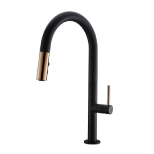
CRM Software: A Comprehensive Guide
Sales is about more than closing a deal. In most cases, it's about building a relationship not just for yourself but for your entire organization. This involves not only gathering information about a lead, but also maintaining it and then serving it up in an easily digestible manner exactly when it's needed. That's the role of customer relationship management (CRM) software: to provide this insight.

Often, small to midsize businesses (SMBs) try to mirror CRM functionality with just a large and ever-growing spreadsheet. However, not only is CRM software easier to use than a spreadsheet, but it's what you'd expect if your contact list decided to evolve a brain and take part in your sales conversations. It records your customers' contact information and remembers the details of your relationship and every interaction—whether by phone or email, and nowadays across other channels such as social media or even your customer help desk.
CRM software must be intuitive or you'll never want to use it. Make a note of how many clicks it takes to conduct a basic task and how easy or difficult it is to find the features you need. Beyond being easy to use, CRM software should be able to manage user error. For example, if you try to conduct a task on the wrong screen or input the wrong data, then the best software will identify your error and suggest the right way to do it. On the other hand, poorly designed software will either let you make the error unchecked or will throw up an unhelpful error message.















__thumb__120x120__70__a960ee47ff3b39dd79c65d0b2f96a706.jpg)

